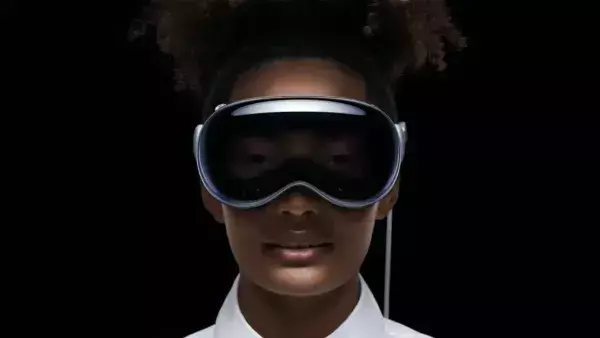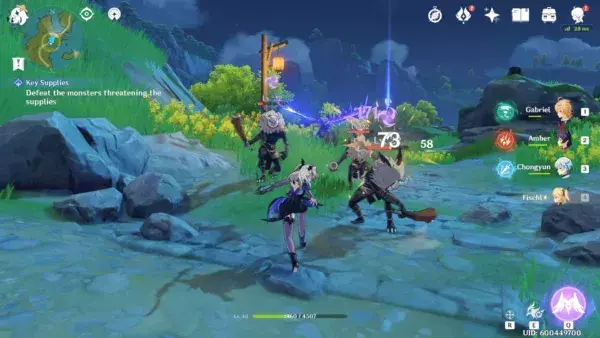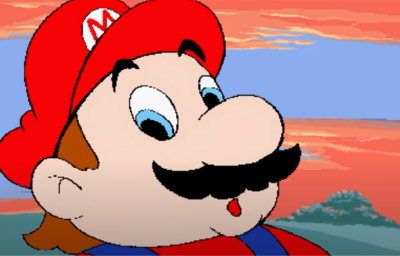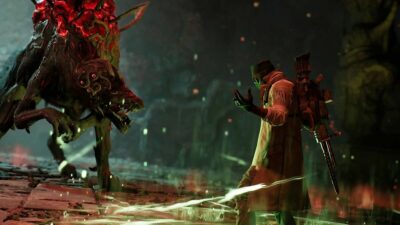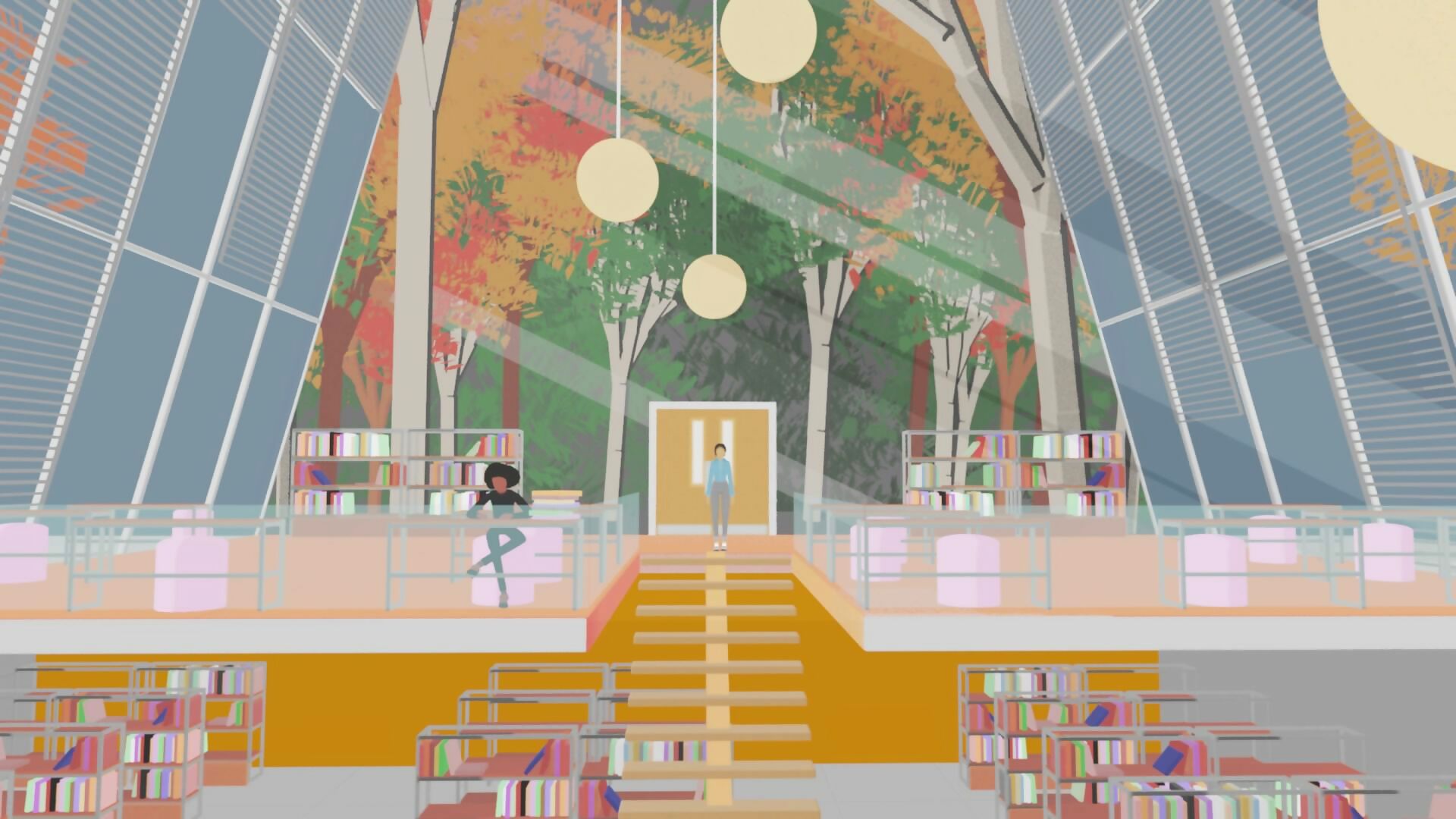
Media Molecule launched Dreams, its creation platform, with the goal of giving players fun and approachable ways of making and sharing their own games. One year later, it’s safe to say it’s succeeded. The community has filled the Dreamiverse, the sharing platform inside Dreams, with all kinds of wonderful creations, from platformers to puzzle games, RPGs to rally racers. And what’s so amazing about these is how many of their creators are only just dipping their toes into game development for the first time.
Paulo Lameiras, known on Twitter as Genesis8012, is a good example of this. He’s an industrial designer, cartoonist, and Dreams creator based in Portugal. Before picking up Dreams, he’d never made a game before. But he’s been using Dreams to create remarkable retro-inspired games to share with the rest of the community. This includes fantastic projects like side-scrolling platformer Cyber Trigger and aerial shoot-‘em-up, Metal Eagles.
“Game design was a long-time dream, but I never had any patience to learn coding by myself,” Lameiras tells us. “When I went to university, game design wasn’t an option. So I went down the industrial design route, because I thought that would allow me to learn the programs that could eventually lead me to game design. Since it never happened, I saw Dreams as my opportunity to start learning programming in a user-friendly way.”

Lameiras believes the advantage of Dreams comes from it being an all-in-one platform. Using the tools available in Dreams, he can put together a piece of music, or a sculpture, and share it with the rest of the community without having to jump between different programs. He also highlights how Media Molecule has designed the toolset to be more approachable than other platforms, putting an emphasis on playful shortcuts and visual scripting over coding languages. This opens up the creation software to those who have no experience with something like C++.
“The visual scripting in Dreams makes the coding behind it so much easier to understand, but it’s also fun to use and experiment with,” Lameiras says. “The fact Dreams is fast and seamless also helps a lot. You can jump between creating art, music, logics, testing, all in real time. It gives us a lot more time to focus on game design, and [the other] aspects of the creation process.”
Dreaming in Pixels
Lameiras’ games don’t look like typical creations you’ll find in Dreams. Unlike most creators, his games use tiny cubes to simulate a pixel art style – turning off lighting and other effects also adds to the retro aesthetic. It takes time and effort to get right since Dreams is primarily a 3D engine, but Lameiras is proud of what he’s been able to accomplish so far and finds he’s always improving.

BADROBO82’s photorealistic depiction of a bamboo grove had everyone and their uncle guessing how he pulled it off
Cyber Trigger, for instance – his first foray into Dreams – could easily be mistaken for something you’d find on the PlayStation Store, due to its extraordinary level of polish. The game has you running and gunning your way across an alien planet, shooting enemies and uncovering secret routes along the way. “I always like to try and go around [the limitations],” says Lameiras. “Pixel art isn’t new, of course, but there are not many Dreamers who do it. I found the formula while working on Cyber Trigger. People liked it and I received a lot of good feedback, which made me want to make even more.”
His sophomore effort, Metal Eagles, uses many of the same techniques. It ditches the side-scrolling perspective of Cyber Trigger for a top-down aerial view. You play as a pilot, with the goal being to destroy enemy planes and tanks, while racking up as many points possible with the three lives you’re given. Cyber Trigger and Metal Eagles have a combined 46,000 plays, but Lameiras isn’t finished with Dreams yet: he’s currently working on a new game building off everything he has learned.

Rhythm games on Dreams can be a bit hit or miss, but Beat Runner is one of the good ones
“The game I’m working on now is more like R-Type,” says Lameiras. “It’s a side-scrolling shoot-‘em-up. I’m using everything I learned on Metal Eagles and Cyber Trigger and I’m boosting everything – or trying to. The planes in Metal Eagles had a maximum of two sprites; in the game I’m building now, each enemy has eight to ten frames, so it’s roughly five times more complex.”
New Perspectives
It isn’t just Lameiras who’s experimenting with 2D art styles in Dreams, however. Based in Cornwall, Oscar Hocking’s currently working on a project named Ghost Hunt, which uses a flat-shaded art style reminiscent of Kentucky Route Zero and Mutazione.

Hocking first stumbled across the style while working on a scene for Media Molecule’s Ocean Jam. He realised he could turn the brightness up on all the objects to remove shadows from the scene and make the colours look flat. This was the first step to devising the signature style for Ghost Hunt. “I think, like everyone, I started off trying to make more realistic-looking things,” says Hocking. “But after the Ocean Jam, I also played Kentucky Route Zero, which is one of the best games I’ve ever played. What I liked about that was all the characters were really square-looking, but they’re not pixel-arty. There’s no nostalgia to it. They’ve just got weirdly rectangle legs. So I tried to make a character like that. But I found I was making things look a lot brighter and a bit more friendly.”
Though the story is still under development, Hocking says Ghost Hunt is about a young girl named Hunrosa (the Cornish word for ‘to dream’) who one day encounters the ghost of her best friend – who’s still alive. From there, players are given the chance to walk in her shoes and find out more about the haunting and the mysterious apparition. Despite the unsettling setup, Hocking explains that he doesn’t necessarily want the game to be a full-blown horror experience. Instead, he wants it to be more focused on the surreal, exploring the concept of ghosts and what it means to be haunted.

Why not explore a lovely château on foot in this beautiful creation from master sculptor, ZIIQ?
Although Hocking had messed around with other development tools in the past, even briefly going to university to study game design, he considers Ghost Hunt to be his first proper attempt at making a game. He took to making the game in Dreams not only because of the low barrier of entry, but also because of the low cost involved. “The magic of Dreams is you can buy a PS4, and then you can make your own game with nothing else,” Hocking says. “It’s so accessible in that way. That’s what I love about it. I don’t have a lot of money, so it’s really nice that this PS4 I got I don’t know how many years ago is still alive and is a creative tool now, rather than just a Resident Evil machine.”
Hocking doesn’t have a finish date for Ghost Hunt yet, but he’s hoping to get it out by the end of the year. Just in time for the Impys – Media Molecule’s annual awards show.
Dark-Town
There are also a number of people experimenting with unique styles in 3D too. Scottish creator Marshall Porter, for instance, is currently hard at work on a retro RPG called Dark-Town, which takes inspiration from Final Fantasy VII for its visual style – complete with an isometric camera, cluttered backgrounds, and blocky characters.

Porter had always wanted to make an RPG of his own, but he didn’t have much experience programming prior to picking up Dreams. Now with the tools at hand, he’s set himself the goal of making Dark-Town, a five-hour tale that pays tribute to some of his favourite games. While the long production on Dark-Town continues, Porter’s also been busy working on some episodic adventure games set within the same universe.
He labels these shorts Tales from Dark-Town, and has plans to release three in total. The first of these, Tales from Dark-Town: Homecoming, is already out, and focuses on two characters, Jack and Syd, as they sneak into Jack’s childhood. What’s striking about Homecoming is its attention to detail. Not only does Porter try to emulate the look of Final Fantasy VII, but he’s also developed a similar battle system, alongside other Dreams creators such as Dinox11 and FlashMedallion. According to Porter, this proved to be one of the most difficult aspects of the Dark-Town project so far, due to being relatively unexplored within Dreams. It’s for this reason that Homecoming features just a small sample of what players should expect from the final project.

Here’s a peek at what Ghost Hunt looks like in creation mode
“An RPG battle system is something that eluded me for a very long time, so I made just RPG episodes that never had any deep battle systems to them,” says Porter. “But it’s actually quite simple. Learning to use variables and maths was the big turning point for me. These really helped to add depth to the battle system. Whereas before the battle system was good for maybe one or two battles (for fun), now it has stats: scalable attributes, buffs and debuffs, weapons and armour management, and so much more.”
Micro Machines
Porter isn’t the only user who’s turned to old favourites for inspiration. Chris Smith, a London-based Dreams creator, recently released Drifter, a game based on classic racing titles such as Mashed and Micro Machines, with a removed camera, an emphasis on drifting, and lots of ways of scuppering your opponents.

Lock’s puzzles are solved using Morse code and ciphers, so keep a notebook on hand
In Drifter, you’ll race against eleven opponents across four detailed courses, drifting around corners and avoiding oil slicks and enemy fire to try to finish in the top three positions. It’s chaotic and challenging, but also incredibly engaging as you try and master the corners on each stage. There are a quite few racing games on the Dreamiverse, but Drifter is one of the few to include convincing AI opponents. Unsurprisingly, this was a challenging aspect to get right.
“The hardest thing was the tracking,” Smith explains. “Trying to track all those cars to the minutest detail. Because the thing with racing games is it’s got to be down to the split second. I’ve got to know the exact position of all the cars and that was a real tricky one to do, but I did get my head around it in the end. Basically, you can’t rely on just Dreams physics, because it’s not fast enough, so I had to write my own engine inside an engine to handle it.”

Lock takes place in the confines of a house. You’ll have to open doors to progress and uncover the mystery within
According to Smith, there are 16 waymarks spread throughout each stage, with each AI using the same points to navigate the tracks. It’s a simple yet ingenious workaround to the problem and leads to some great pile-ups as you and the other racers wrestle for space on the track.
For Smith, Dreams was a return to programming games. Growing up, he had a ZX Spectrum, and later went on to study computer science, but for a while after that, he lost track of gaming. Then he stumbled across a trailer for Dreams and decided he wanted to give it a whirl. “I was completely out of the game scene for years, really,” says Smith. “It’s only as I’ve had a bit of time for myself that I went on the computer and really wanted to get back into programming or something like that. I was just looking on YouTube before Dreams came out and went, ‘Oh my god, this is exactly what I’m looking for.’”

IansaneArtist is known for their incredible scenic creations, and this is no exception
Drifter has been played almost 2000 times at the time of writing, and Smith has plans to add new features to his racer – which isn’t actually that straightforward. “I want to come back to it,” he explains. “But because I’ve basically built the engine for the first stage, all the other levels were quite easy. If I want to change or add anything new, I have to go back to the beginning.”
Re:Load
As you can probably tell, new projects in a variety of genres appear on Dreams all the time. With this in mind, it’s worth mentioning the work of Jonathan Hunter, aka 800pixelgorilla, and the puzzle game Lock. In it, you’re asked to solve puzzles to locate four letters, which you need to arrange into the correct order to open a locked door. It’s one of the best puzzle games on the platform, and was a labour of love for its creator, who conceived the project way before Dreams was even released. “When I knew Dreams was something I was going to get into, I was like, ‘OK, what will be the game that I actually make?’” says Hunter. “That was the moment I started making Lock, because I started most of it on paper. I knew that was my end goal – to get good enough to make that game. But, along the way, some other ideas came up.”

This spherical shooter has players defending a planetoid from UFOs, asteroids, and other space debris. Exciting stuff
To solve puzzles in Lock, you’ll have to pay attention to your environment: the rhythmic dripping of a tap, how items are stacked in a cupboard, or the contents of a nearby book. Many of the problems are real head-scratchers, and will likely require you to keep a pen and paper close at hand.
When developing the game, Hunter had two major touchstones: the website Puzzled Pint, dedicated to logic puzzles and ciphers, and Jonathan Blow’s The Witness, whose influence on the game is unmistakable. “The Witness introduced me to the idea of game design as a conversation between the player and designer,” says Hunter. “There’s a give and take there. I’m trying to make the player do something, and the player is supposed to respond accordingly, so that’s always been sitting in my head ever since I played that game.”

Tannic Alloy is a Dreams creator from the US
Hunter says the reason he created the game in Dreams was because it reminded him of his old Flash days, where the barrier to entry was low and the time investment minimal. Like many others who gravitate towards Dreams, he didn’t want to learn a new coding language. Instead, he wanted something reasonably non-committal that would allow him to get started straight away.
Since Lock’s release, the community has played the game a staggering 81,000 times, making it one of the more successful games on the platform. Impressively, Hunter also took home three awards at the second Impys for the creation. So what’s next?

Earn points by touching a statue without alerting the museum’s security guard. The longer your touches, the more your multiplier will increase
“It’s hard to follow up something like that,” Hunter says. “I’m flirting with doing a sequel, but I’m not as interested in that because I feel like I said all I needed to say with that game… I’m also working on something currently in Dreams. But it’s completely in the [opposite] direction. I’m making, like, a reverse Pac-Man game where instead of the ghosts chasing you, you’re chasing them. It’s going to be a high-score [type of game].”
So, there’s no shortage of great things to play in Dreams, and the quality is only getting more impressive as people get more familiar with the tools. It’ll be very interesting to see how the platform develops in the future, and whether any of the creators we see in Dreams will go on to pursue a career in game dev in the future.

A beautiful collection of viewpoints from IansaneArtist that let you travel to far-flung parts of the world, as well as a few places closer to home, like the Cliffs of Dover
Many of those we spoke to were interested in game dev, but they have their hopes set on the platform evolving alongside them to the point where they can bring their Dreams to other devices and even sell their creations. For now, though, that’s just a dream.


